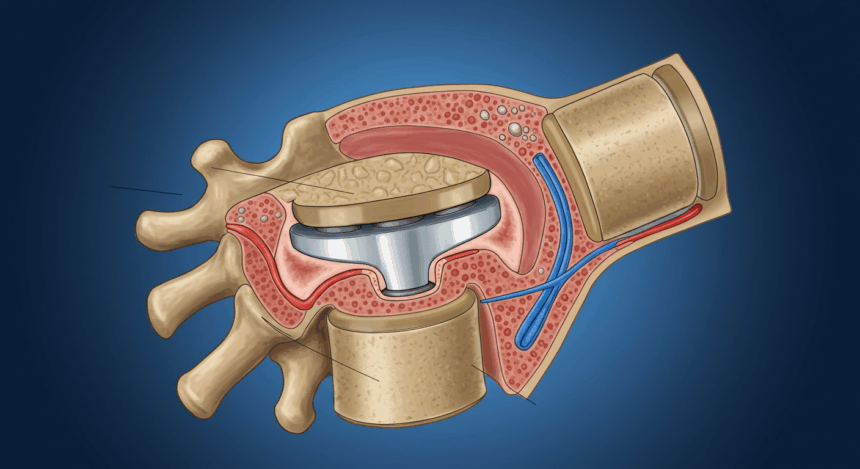Restore Mobility. Relieve Pain. Avoid Fusion.
Artificial Disc Replacement (ADR) is a state-of-the-art spinal procedure designed to replace a damaged spinal disc with an artificial one—preserving natural motion and reducing chronic back or neck pain. It is a modern alternative to traditional spinal fusion surgery and is especially suited for active individuals who want to retain flexibility and avoid long-term stiffness.
🧠 What is Artificial Disc Replacement?
In ADR, the worn-out or degenerated disc in the spine (usually in the neck or lower back) is surgically removed and replaced with a biomechanically engineered artificial disc. Unlike spinal fusion, which locks two vertebrae together, ADR maintains movement between the bones, offering a more natural range of motion after recovery.
Artificial discs are made of durable materials such as medical-grade metal and plastic, designed to mimic the cushioning and flexibility of a healthy spinal disc.
✅ Benefits of ADR Over Fusion Surgery
-
Preserves Natural Motion – Allows the spine to bend and rotate normally.
-
Faster Recovery – Less invasive than fusion and no need for bone healing.
-
Less Stress on Adjacent Levels – Reduces risk of wear and tear on nearby discs.
-
No Bone Grafting Required – Eliminates the need for taking bone from elsewhere.
-
Return to Active Lifestyle – Ideal for young or active patients.
🩺 Who is a Candidate for ADR?
ADR is recommended for patients with:
-
Chronic neck or lower back pain
-
Degenerative disc disease (DDD)
-
Herniated disc that hasn’t responded to therapy
-
Pain confined to one or two disc levels
-
Failed previous conservative treatments (e.g., physiotherapy, medication)
ADR is generally suitable for younger, active patients with good bone quality and no significant spinal deformity or instability.
⚙️ How is ADR Performed?
-
Assessment: The patient undergoes MRI and X-rays to identify the problematic disc and assess suitability.
-
Surgery: Under general anesthesia, the damaged disc is removed via a small incision (either from the front of the neck or lower abdomen).
-
Implant Placement: A specially sized artificial disc is inserted in place of the removed disc.
-
Closure: The incision is closed with minimal scarring.
-
Recovery: Patients often start walking the same day and return to normal activity within a few weeks.
👨⚕️ Expertise You Can Trust – Dr. Praveen Saxena
Dr. Praveen Saxena, a senior spine surgeon at Apollo Hospitals, Ahmedabad, is highly skilled in advanced motion-preserving spine surgeries like Artificial Disc Replacement. Trained internationally in microsurgery and motion-preserving techniques, he ensures precision, safety, and personalized care for each patient. His approach focuses on minimally invasive, motion-preserving treatment with long-term results.
💬 What Patients Are Saying
“I had neck pain for years and was told fusion was the only option. Dr. Saxena offered ADR, and it changed everything—I have no pain and full movement!”
— Mr. Dinesh K., 40
“I didn’t want to lose flexibility at such a young age. The artificial disc gave me back my active life.”
— Mrs. Alia S., 35
📌 Quick Facts: ADR vs Fusion
| Feature | ADR | Spinal Fusion |
|---|---|---|
| Motion Preservation | ✅ Yes | ❌ No (fusion stiffens spine) |
| Recovery Time | 2–4 weeks | 6–12 weeks |
| Reoperation Risk Nearby | Low | Higher (adjacent segment disease) |
| Bone Graft Needed | ❌ No | ✅ Yes |
| Ideal For | Younger, active patients | Older or unstable spine |
📞 Is Artificial Disc Replacement Right for You?
Take the next step toward a pain-free, flexible, and active life.
Book a consultation with Dr. Praveen Saxena at Apollo Hospitals, Ahmedabad.
He will assess your condition and recommend the most effective, motion-preserving solution tailored to your needs.

